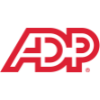15 Top Payroll Outsourcing Companies
Some products in this article are from our partners. Read our Advertiser Discloser.
Are you looking for the best payroll companies?
Using payroll outsourcing companies can save you time and money so you can focus on growing your business.
After all, pay periods typically come every two weeks.
Whether you process payroll yourself in your spare time or you want to simplify your assistant’s workload, automating your payroll can be one of the wisest business moves you make this year.
Regardless of whether you are among the small business owners in need of HR assistance or you run a larger company, continue reading to find the best payroll provider for your situation.
Best Companies for Outsourcing Payroll

Gusto
Competitively priced and more affordable than other payroll services.

ADP
Compare your HR practices to industry-leading HR standards.

Paychex
Calculates, pays, and files the local, state, and federal taxes.
If you have a small business with a few employees or a larger company with hundreds, payroll outsourcing services can offer many services. From employee self-service mobile apps to hands-on databases, these payroll outsourcing providers offer many features.
There are many different software options for payroll, so you might try giving these service providers a try first.
1. Gusto
Gusto is an online payroll software that makes payroll easy and affordable. You can use one of their standalone plans for as low as $45/month, or you can add their free app to your FreshBooks account.
You can also integrate Gusto with your Quickbooks or Xero account too.
The three Gusto payroll processing plans offer basic to extensive HR services:
- Core
- Complete
- Concierge
All of the Gusto plans are competitively priced and can be more affordable than some of the other online payroll services for future services.
In some cases, Gusto includes several benefits administration features in their basic Core plan that other companies for outsourcing payroll only begin to offer in their mid-tier plan.
In addition, if you enroll in Gusto’s Concierge plan, you can access their human resources benefits administration offerings.
These let you quickly administer and track any employee training, creating employee handbooks and HR guidebooks in addition to a dedicated Gusto support team.
This can be a great option if you are self-employed and want to run payroll.
Learn more: Gusto Review
2. ADP
If you are outsourcing payroll, ADP is probably the largest payroll outsourcing company in the United States. Although they tend to be more expensive than other options, ADP has a solid reputation and high customer service ratings.
You can select from one of the following ADP plans:
- Essential Payroll
- Enhanced Payroll
- Complete Payroll + HR
ADP’s basic Essential Payroll plan is sufficient when you only need to submit direct deposit payments for 1099 contractors or W-2 employees.
Another neat feature is that you can compare your current HR practices to the industry-leading HR standards for free, too.
When collecting state unemployment insurance or wage garnishments, you need to use their Enhanced Payroll plan. You also need this mid-tier plan to write a paper check or offer prepaid payment cards too.
Learn more: ADP Review
3. Paychex
When you are trying to outsource processing payroll, Paychex is one of the largest payroll software companies responsible for the payroll services for 8% of U.S. private-sector workers.
Paychex will also automatically calculate, pay, and file each employee’s appropriate local, state, and federal taxes.
When you hire a new employee or contractor, Paychex also automatically reports all new hires to the appropriate state registry to spare you a headache.
Upgrading to the Flex Select plan gives you access to a full-time payroll specialist, and you also can print physical checks and labor compliance posters.
Sign up now for 3 months free.
4. Intuit Quickbooks
If you already track your business transactions on Intuit Quickbooks, a natural next step can be to outsource payroll using their Enhanced Payroll or Full Service Payroll option.
This option is available with any of their small business payroll plans:
- Simple Start
- Essentials
- Plus
Enhanced Payroll
With Quickbooks Enhanced Payroll, you can enter the number of hours, overtime, and deductions for up to 50 employees and contractors.
You can access free 24/7 direct deposit, and QuickBooks will calculate the W-2 tax forms.
Quickbooks also calculates and pays any payroll taxes. In addition, you have access to a live payroll expert anytime you need help.
Full-Service Payroll
For a complete payroll and HR Suite, you can also upgrade to the Full-Service Payroll option too.
One of the coolest reasons to consider this service is the no-penalty guarantee. If you get hit with a tax penalty or fee because of a Quickbooks miscalculation, they will pay the fee for you!
5. Deluxe Payroll
Deluxe Payroll Services has a long history of providing payroll processing services help to companies everywhere. They serve small businesses, large corporations and everyone in between.
If you want to outsource payroll, Deluxe’s standard payroll package includes features like:
- Employee checks
- Payroll register
- Worksheets
- Tax filing advice
- Exception reports
- Business services
And more. They also offer bank reconciliation, payroll debit cards, physical checks and direct deposits. In addition, they’ve got a dedicated customer service team for all of your payroll processing questions and needs.
Also, you can submit your payroll information via phone, fax or online at the Deluxe payroll website.
6. OnPay
Another affordable and extensive payroll option is OnPay.
For a flat monthly fee of $36 plus $4 per employee, you can outsource payroll and get:
- Paper checks or prepaid cards at no additional cost
- New employee self-onboarding
- Reports about new hires
- Lifetime access for previous employees
- Employees can digitally print W-2 tax documents for free
One of the main reasons why you might use OnPay is that you don’t have to pay extra for printed checks or payment cards.
These two physical payment options are usually an extra charge or only included in upper-level plans for other companies for outsourcing payroll.
Direct deposits are the quickest and most convenient, but it’s still nice to have this option when it’s easier to write a check.
You can also use OnPay for 401k contributions and benefits too. Both of these add-ons cost extra, but it can still be cheaper than going with another payroll processing outsourcing company when you’re ready to pay either of these employee benefits.
7. SurePayroll
SurePayroll specializes in offering online payroll solutions for business with up to 10 employees.
You can easily submit payroll using SurePayroll’s following amenities:
- Mobile Payroll App
- Integration with most bookkeeping programs including Intuit Quickbooks
- Federal and State Labor Law Compliance
- Time Clock Integration
Two other reasons to consider SurePayroll include their A+ Better Business Bureau rating and they also have a U.S.-based support team to answer your payroll questions.
Some discount online payroll provider companies cut corners in the support area to offer rock-bottom prices.
With SurePayroll, you can either submit payroll online or with their self service mobile app. SurePayoll also automatically calculates your withholding taxes at the local, state, and national levels automatically.
8. PayUSA
PayUSA is a payroll provider offering services for up to 1,000 employees. With direct deposit, your employees have the opportunity to deposit their check into one bank account or several bank accounts at the same time.
If you prefer paper checks, PayUSA also offers check stuffing services and will automatically print your signature on each check.
You can use PayUSA for these services:
- New Hire Reporting
- ACA Compliance
- Workers’ Compensation
- Payroll Tax Services
You might like PayUSA because of its customized service that you might not get from other online services. This is a great service for small businesses to large.
9. iSolved
iSolved offers basic to advanced payroll service solutions. You can also track employee time and attendance.
Plus, iSolved also offers portals for:
- Administrators
- Insurance brokers or agents
- Employee self service
- Managers
With role-based access controls, you can easily make sure that each department gets the necessary payroll processing information they need to make sure your employee needs are addressed.
And, you’re not overwhelming a particular department by giving them too much information or responsibility at once.
For a full-service suite of payroll and HR benefits, you might enjoy iSolved.
10. PayCor
You can use Paycor for:
- Payroll
- Time
- HR Support
- Tax Services
The payroll system is clean and efficient. It’s easy to monitor your business goals with the progress bars, and you can also use General Ledger files to make accounting easy.
Paycor can also send you notification alerts when it notices a potential red flag to ensure you don’t pay an employee an incorrect amount or you have to pay an unexpected fee or penalty.
Direct deposit is the standard payment method, but you can also offer paper checks or prepaid cards as an additional service to your employees.
Paycor also integrates with every 401k plan and benefits administration.
In addition to using Paycor to automatically calculate employee tax withholdings and deductions, you can also use the Paycor payroll tax software to pay your own payroll taxes.
And, the payroll tax offering also help you claim tax credits that can minimize your business tax liability.
11. Rippling
Rippling is a payroll platform designed to make your life easier, without breaking the bank.
The price point starts at just $8 per month, per user. So, small organizations can keep costs down with this price-effective solution. But as a large organization, the per-user cost can add up quickly.
With Rippling you can automate the following paperwork chores:
- Onboarding and offboarding
- Payroll in all 50 states
- Federal, state, and local tax filing
- Tax documents for new hires
- Direct Deposit or check payments
- Worker’s Comp
- Garnishments
You’ll also be able to manage benefits, keep up with time, and institute company-wide policies with ease.
The platform can also be used throughout the job application process. You can create customized screening questions, message templates, and hiring reports. For current employees, it’s easy to manage educational compliance by uploading your own course or selecting from a pre-build compliance course.
Beyond employee management, you can use Rippling to manage the apps on employee devices, monitor inventory, and more. It’s a comprehensive platform to help your growing business run smoothly.
12. Square
Square offers payroll outsourcing services designed to make your small business easier to manage.
You’ll pay a $35 base subscription fee. Plus, $5 more per person paid each month. That’s a comprehensive price which won’t come with any extra costs.
When working with Square, you’ll have access to the following:
- Full-service payroll
- Employees and contractor payment options
- Tax filing and payments done for you
- Multi-state payroll possible
- Timecard system
- Live support offers help when you need it
Square’s goal is to make it easier to manage your business in one place. With a wide variety of management options, this automation will definitely come in handy.
13. Eddy
Eddy is business management system that’s broken down into three components.
First, Eddy Hire works with you to hire reliable employees to run your business. The service will post your job listings to over 100 job boards, automate candidate communication, create interview schedules, and craft digital offer letters.
Once you have the right people in place, Eddy People is there to help you manage your employees. Within the platform, you’ll get access to employee data to analyze performance.
Additionally, you’ll have a convenient place to streamline your HR processes. The goal of cleaning up your employee management is to provide a better experience for your workers, which helps with employee retention.
Finally, Eddy Payroll comes into play. Through this part of the platform, you’ll have access to a full-service payroll system. This includes managing direct deposits, updating ledgers, reporting new hires, and filing taxes on time.
14. Paylocity
Paylocity offers an extensive array of employee management features. A few of the features include:
- Workforce management
- Human resources
- Talent
- Benefits
- Employee experience
- Data insights
- Mobile
Of course, you’ll find payroll management options. Within the payroll features, you’ll find expense management, tax services, garnishment assistance, and even on-demand payment options.
One thing I don’t like about Paylocity is the lack of pricing transparency. If you like what the platform has to offer, you’ll need to request a demo to determine your cost. The price point isn’t clear.
But Paylocity does say, “The cost of payroll software depends on the size of your organization, the frequency of payroll, and the number of services or modules you need.”
15. APS Payroll
APS Payroll offers a wide range of benefits.
The payroll provider offers:
- Accurate and on-time tax payments
- Access to important tax documents when you need it
APS claims to help business owners reduce their time spent on payroll from days to hours. Beyond payroll assistance, APS Payroll also offers:
- HR support
- Recruiting help
- Streamlined onboarding
- Attendance tracking
Like Paylocity, there’s no concrete information on pricing. Instead, you’ll have to reach out to the company for a personalized price based on your organization and your needs.
Frequently Asked Questions
Here are some common questions people ask when outsourcing payroll.
What is Payroll Outsourcing?
Payroll outsourcing is where a company hires a third-party payroll program to pay independent contractors and employees rather than paying a full-time payroll professional.
Are Payroll Outsourcing Services and a PEO the Same?
Payroll outsourcing companies and PEOs (Professional Employer Organizations) are similar but not exactly alike. In addition, most payroll outsourcing providers offer PEO services like HR services and benefits administration for W-2 employees.
What are the Benefits of Using a Payroll Company?
Payroll outsourcing companies offer various conveniences that make paying the bills stress-free.
These include:
• Deposit directly into accounts and Pay Stubs
• Automatic withholding for payroll taxes and employee benefits
• Year-end W-2s for employees and contractors
• Customized payroll reports
• HR services, including new employee onboarding paperwork
Can You Use a Payroll Service Provider to Pay Independent Contractors?
Yes! You can pay your contractors with payroll outsourcing services or payroll providers. This is a great feature for small businesses and large ones.
Do Payroll Companies Offer Tax Guarantees?
Just like you file your taxes with an accountant to enjoy additional support if the IRS audits you, many payroll providers offer a tax protection guarantee, too.
Using services with payroll tax administration services is a huge benefit if you are not clear on current IRS rules.
How Do These Payroll Companies Compare?
| Company | Min. Monthly Price |
| Gusto | $19 |
| ADP | $59 |
| Paychex | $39 |
| Intuit Quickbooks | $35 |
| Deluxe Payroll | $39 |
| OnPay | $36 |
| SurePayroll | $19.99 |
| PayUSA | $75 |
| iSolved | $80 |
| Paycor | $99 |
| Rippling | $8 |
| Square | $35 |
| Eddy | $49 |
| Paylocity | Varies |
| APR Payroll | Varies |
Summary
Small businesses say that the payroll function can be one of the most time-consuming administrative tasks.
To make better use of your time, you can use a payroll service company for processing payroll and automatically handle the tax and benefit withholdings too.
Whether you only have contractors to pay or staff of W-2 employees, outsourcing payroll is a great decision when you’re spending too much time keeping books instead of growing your business.


Paychex is terrible. Every week our payroll rescheduled and had to be manually re entered and employees ended up being paid twice. I was told the money would be removed from their account only to have it just stay there until I complained.
I agree with Paychex not being transparent with their fees. They charge you for special payroll runs.
Yes, that is true! There are definitely some better options if you’re wanting more transparency!
MyPayrollHR was a total fraud…employees have lost up to $35 million in wages. At $10/month/employee perhaps that should be a red flag that it was “too good to be true”.
I’m sorry you had a poor experience. Thank you for sharing! It helps others make decisions on what will work best for them!
You claim Paychex to be a top ten resource. They are not transparent with their pricing as well as having hidden fees. You might want to check your sources.
Thank you for your viewpoint and comments.
I worked for Alliance and did not get paid for my month’s work of printing and shipping payroll checks. I’ve been offered a job with Paychex. Are they reliable?
We can’t give you absolutes or guarantees. It’s up to you whether you want to try working with them or not. Of course, you are free to investigate them on your own before agreeing to anything. Look online to see if they have negative reviews. You can also try looking them up through the Better Business Bureau to see if there are complaints against them.